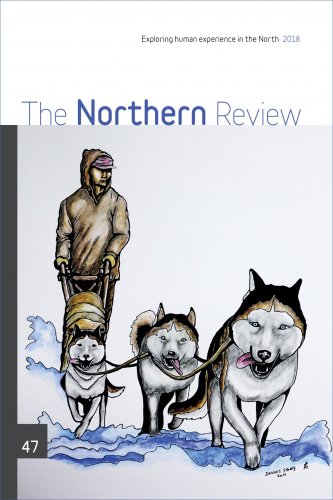During the 1970s, southern Canada changed its perception of resource development in the Canadian North. At the beginning of the decade most observers outside of the Yukon and Northwest Territories, as well as many within the territories, saw resource development as something that was going to be of great benefi t to the North (Abele, 1987; Rea, 1968).
View Dealing with Resource Development in Canada’s North
The Northern Vision that had emerged in the 1950s (Diefenbaker, 1958) continued throughout the 1960s with varying degrees of enthusiasm. While some were critical of specifi c government policies, the general acceptance that continued mine and oil and gas development would be important for the region was almost universal among those whose voices were most heard on the subject (Lotz , 1970). This changed in the 1970s when the voices of the Indigenous peoples of the region fi rst started to be heard. The Berger Inquiry of that decade was probably the best known instance of people outside the region being able to hear what Indigenous communities thought about resource development in their region (Berger, 1977).
These communities told listeners that resource development had not been kind to them. Mining and the nascent oil and gas industry had been devastating to their traditional livelihoods and to their cultures. They believed that under the conditions that existed at that time, future resource development would devastate the environment that they depended upon for their survival (Berger, 1977: xi). Assaults on their cultures from European culture would increase (xvii). In terms of economic benefi ts, resource development would provide few long-term jobs and most of the fi nancial benefi ts would fl ow out of the regions to southern Canada (xix).
Negative social impacts would increase substantially as “alcoholism, crime, violence, and welfare dependence” would increase in Indigenous communities (xxii).
Contents
Introduction: Dealing with Resource Development in Canada’s North
Chris Southcott
Impact and Benefit Agreement (IBA) Revenue Allocation Strategies for Indigenous Community Development
Thierry Rodon, Stephan Schott, Isabel Lemus-Lauzon
Lost in Translation? Exploring Outcomes of Nunavut’s Resource Development Training and Employment Policies for Inuit of Northern Baffin Island
Andrew Hodgkins
Mining Economies: Inuit Business Development and Employment in the Eastern Subarctic
Anteneh Belayneh, Thierry Rodon, Stephan Schott
Waste Management in Labrador and Northern Communities: Opportunities and Challenges
Catherine Keske, Morgan Mills, Laura Tanguay, Jason Dicker
Free, Prior, and Informed Consent (FPIC) in the Yukon: Established Practice or Untravelled Path?
Emily M.W. Martin, Ben Bradshaw
Gendered Environmental Assessments in the Canadian North: Marginalization of Indigenous Women and Traditional Economies
Sheena Kennedy Dalseg, Rauna Kuokkanen, Suzanne Mills, Deborah Simmons
Inuvialuit Social Indicators: Applying Arctic Social Indicators Framework to Study Well-Being in the Inuvialuit Communities
Andrey Petrov
Community Based Participatory Research as a Long-Term Process: Reflections on Becoming Partners in Understanding Social Dimensions of Mining in the Yukon
Gertrude Saxinger, First Nation of Na-cho Nyak Dun





